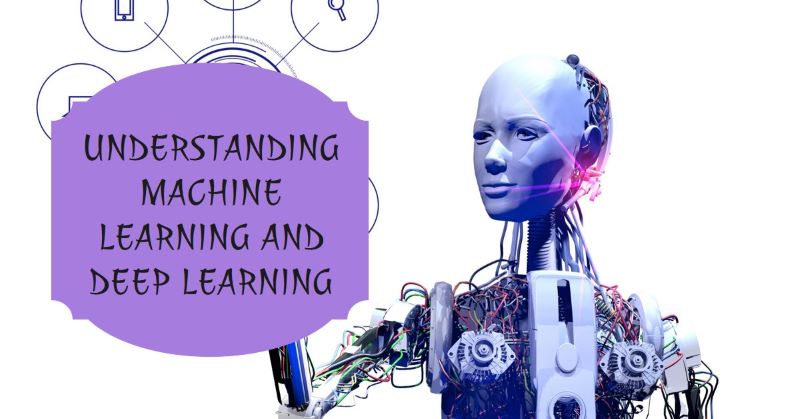Introduction
Machine learning and deep learning are two branches of artificial intelligence that have gained significant attention in recent years. Both types of algorithms are used to train models to make predictions or decisions based on data. While they share similarities, there are also distinct differences between machine learning algorithms and deep learning algorithms. In this blog post, we will explore these differences and discuss when to use each type of algorithm.
Machine Learning Algorithms
Machine learning algorithms are a subset of artificial intelligence algorithms that are designed to learn from and make predictions or decisions based on data. These algorithms can be classified into three main types: supervised learning, unsupervised learning, and reinforcement learning.
Supervised Learning
Supervised learning algorithms are trained using labeled data, where the input data is paired with the corresponding output or target value. The algorithm learns to map the input data to the correct output by minimizing the error between the predicted and actual values. Common supervised learning algorithms include linear regression, logistic regression, support vector machines, and decision trees.
Unsupervised Learning
Unsupervised learning algorithms, on the other hand, are trained using unlabeled data. These algorithms aim to find patterns or relationships in the data without any prior knowledge of the output or target values. Clustering and dimensionality reduction are two common tasks performed using unsupervised learning algorithms. Examples of unsupervised learning algorithms include k-means clustering, hierarchical clustering, and principal component analysis.
Reinforcement Learning
Reinforcement learning algorithms learn by interacting with an environment and receiving feedback in the form of rewards or penalties. The algorithm learns to take actions that maximize the cumulative reward over time. Reinforcement learning is commonly used in applications such as game playing, robotics, and autonomous vehicles.
Deep Learning Algorithms
Deep learning algorithms are a subset of machine learning algorithms that are specifically designed to learn from and make predictions or decisions based on complex, high-dimensional data. These algorithms are inspired by the structure and function of the human brain and are composed of artificial neural networks.
Neural Networks
Neural networks are the building blocks of deep learning algorithms. They are composed of interconnected nodes, or neurons, that mimic the neurons in the human brain. Each neuron takes inputs, applies a mathematical operation to them, and produces an output. The outputs of one layer of neurons serve as inputs to the next layer, creating a hierarchical structure.
Deep Neural Networks
Deep neural networks are neural networks with multiple hidden layers. These layers allow the network to learn hierarchical representations of the input data, capturing both low-level and high-level features. Deep learning algorithms can automatically learn these representations from the data, without the need for manual feature engineering.
Convolutional Neural Networks
Convolutional neural networks (CNNs) are a type of deep learning algorithm commonly used for image and video analysis. They are designed to automatically learn spatial hierarchies of features from the input data. CNNs use convolutional layers to apply filters to the input data, capturing local patterns and structures.
When to Use Machine Learning Algorithms?
Machine learning algorithms are well-suited for a wide range of tasks, including regression, classification, clustering, and dimensionality reduction. They are particularly useful when the input data is structured and the relationships between the features are relatively simple. Machine learning algorithms also tend to require less computational resources and training data compared to deep learning algorithms.
When to Use Deep Learning Algorithms?
Deep learning algorithms excel in tasks that involve complex, high-dimensional data, such as image and speech recognition, natural language processing, and recommendation systems. They can automatically learn hierarchical representations of the input data, capturing both low-level and high-level features. Deep learning algorithms often require large amounts of labeled training data and computational resources to train effectively.
Conclusion
Machine learning and deep learning algorithms are both powerful tools in the field of artificial intelligence. Machine learning algorithms are versatile and well-suited for a wide range of tasks, while deep learning algorithms excel in tasks that involve complex, high-dimensional data. Understanding the differences between these two types of algorithms is crucial when choosing the right approach for a particular problem. By considering the nature of the data and the complexity of the task, one can make an informed decision on whether to use machine learning or deep learning algorithms.

